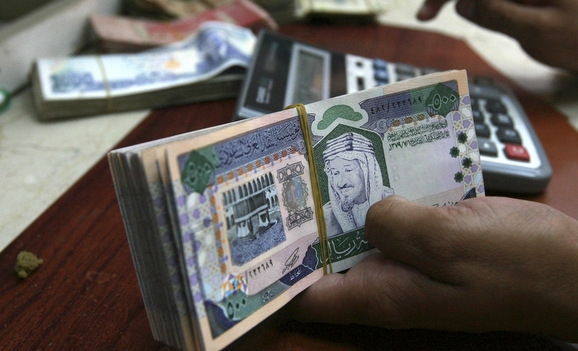Saudi Arabia is heading for real GDP growth of 6 percent in 2012, according to Moody's Investors Service. It also said the outlook for Saudi Arabia's banking system remains stable.
The Kingdom's nonoil private-sector real GDP to expand by 5.2 percent in 2012 and 5.5 percent in 2013, following 6.4 percent growth in 2011, with overall real GDP growth forecast at 6 percent in 2012, one of the highest rates in the GCC, Moody's said.
Considering that the Kingdom managed 4.6% GDP growth in a difficult 2010, the projected 6.0% in 2012 is achievable
Commenting on Moody's report, Asim Bukhtiar, vice president and head of research at Riyad Capital, said: "Considering that the Kingdom managed 4.6 percent GDP growth in a difficult 2010, the projected 6.0 percent in 2012 should be achievable."
He said: "Strong commercial credit demand suggests that the economic engine is humming along.
However, 2013 may present challenges as trading partners grapple with deteriorating growth prospects."
Economic activity and banking-system credit growth will be supported by the positive effects of high government spending and increased private-sector business activity
The Moody's report said economic activity and banking-system credit growth will be supported by the positive effects of high government spending and increased private-sector business activity.
The key drivers of the outlook are a benign operating environment, low problem loan levels, strong loss-absorption capacity underpinned by high capital buffers and solid profitability, and the sector's stable, low-cost deposit base and ample liquidity.
However, Moody's says that these system-wide strengths will remain counterbalanced by structural weaknesses over the 12-18 month outlook period.
Jarmo T. Kotilaine, a regional economist, said: "The GDP projection of 6 percent is not impossible but does look a tad ambitious in view of intermediate national accounts data. GDP growth was 5.9 percent in Q1 and 5.5 percent in Q2, the drop being partly due to lower oil prices and less momentum in production.
But we also have the base effect due to the sharp acceleration of growth last year."
Real GDP expanded by an annual 9.6 percent in Q2 2011, by 7.5 percent Q3 2011 and by 7.4 percent in Q4
He said real GDP expanded by an annual 9.6 percent in Q2 2011, by 7.5 percent Q3 2011 and by 7.4 percent in Q4. The key drivers were a general increase in oil prices and production as well as a sharp boost to government expenditure due to new spending priorities in areas such as housing, job creation and social welfare. Generally speaking, these drivers are unlikely to grow as fast this year, even allowing for the decreased risk aversion we have seen in recent weeks due to global developments. Nor is private sector growth likely to entirely make up for the slack. "The outlook for the economy is very benign, but in terms of headline growth figures likely one of relative normalization as compared to last year," Kotilaine said.
Correlation with international markets volatilities
Basil Al-Ghalayini, CEO of BMG Financial Group, said: "In spite of the strong fundamentals of the Saudi economy in terms of huge government spending, young spending population, political stability coupled with religious tourism and unlimited upside potential in addition to the oil one, we are still seeing certain correlation with international markets volatilities. Although certain sectors in Saudi Arabia have been affected negatively by the global slowdown, investment opportunities are still in great demand in the country."
About banking outlook, Moody's expects problem loans (defined as loans overdue by 90 days) to gross loans to decline below the December 2011 level of 3.0 percent.
However, Moody's says that asset quality remains exposed to event risks, due to the continued high, albeit declining, single-party exposures in the banks' loan books. Over the outlook period, the corporate sector will also remain susceptible to vulnerabilities, including the relatively low transparency of family-owned conglomerates and the frequent intermingling of risky investment activities with operating activities that are typically more stable.
Saudi banks are in very robust health by global standards
"Generally speaking, of course, Saudi banks are in very robust health by global standards," Kotilaine said. While the point about structural weaknesses has some power, the weaknesses are being limited to an extent. Banks have become more rigorous about vetting clients and deals in response to earlier name lending concerns. And of course, the expansion of new lending in areas such as mortgages and SMEs can help curb some of the concentration challenges, he said.
Meanwhile, total deposits in the Saudi banks fell over the week ended Sept. 27, down by 0.16 percent, reaching SR 1.20 trillion, with its YTD growth decreasing to 8.4 percent, Riyad Bank said in its weekly report.
Arab News
9 October























































